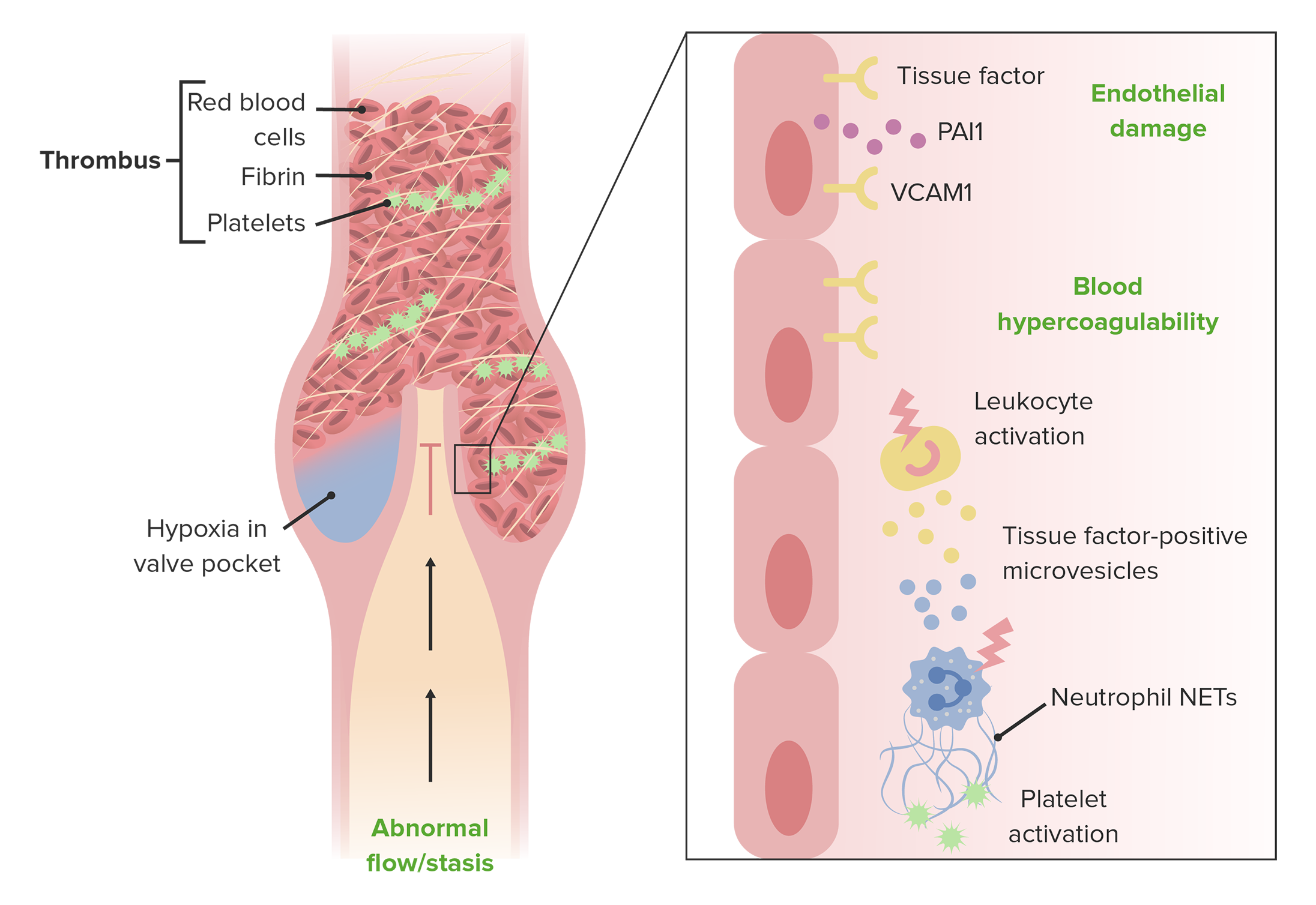Playlist
Show Playlist
Hide Playlist
Deep Vein Thrombosis: Epidemiology
-
Slides 10 VascularMedicine advanced.pdf
-
Reference List Vascular Medicine.pdf
-
Download Lecture Overview
00:01 Let's talk about the epidemiology of deep venous thrombosis and its relationship to pulmonary embolism. I've already implied that this is a very, very common entity. You can see here that in the United States, 1 in 1,000 individuals per year is diagnosed with DVT. 00:18 You can do the mathematics. In a country of 330,000,000 people, we're talking about many, many tens of thousands of episodes of deep venous thrombosis. When the venous thrombosis is in the popliteal veins—a small vein down in the lower part of the leg—usually, it will stay there or resolve by itself without major pulmonary embolism. Unfortunately, about 10% of these patients will develop proximal DVT—that is, the DVT that extends up into the femoral vein. And 10% of proximal-vein DVTs lead to pulmonary embolism. 00:59 So many patients with DVT don't develop pulmonary embolism, but as we've said, when they do develop pulmonary embolism, it's potentially fatal. 50% of untreated proximal DVTs lead to pulmonary embolism within 90 days or three months. And 90… greater than 90% of pulmonary embolisms are due to lower-leg DVTs. Occasionally, there's clots in the pelvic veins from an infection or post pregnancy, and clots can break off there and embolize, but that's only 10%. 90% of the DVT is in the veins of the legs.
About the Lecture
The lecture Deep Vein Thrombosis: Epidemiology by Joseph Alpert, MD is from the course Venous Diseases.
Included Quiz Questions
90% of the pulmonary embolism result from clots in which area?
- Legs
- Abdominal area.
- Upper limbs.
- Pelvic area.
Customer reviews
5,0 of 5 stars
| 5 Stars |
|
5 |
| 4 Stars |
|
0 |
| 3 Stars |
|
0 |
| 2 Stars |
|
0 |
| 1 Star |
|
0 |





